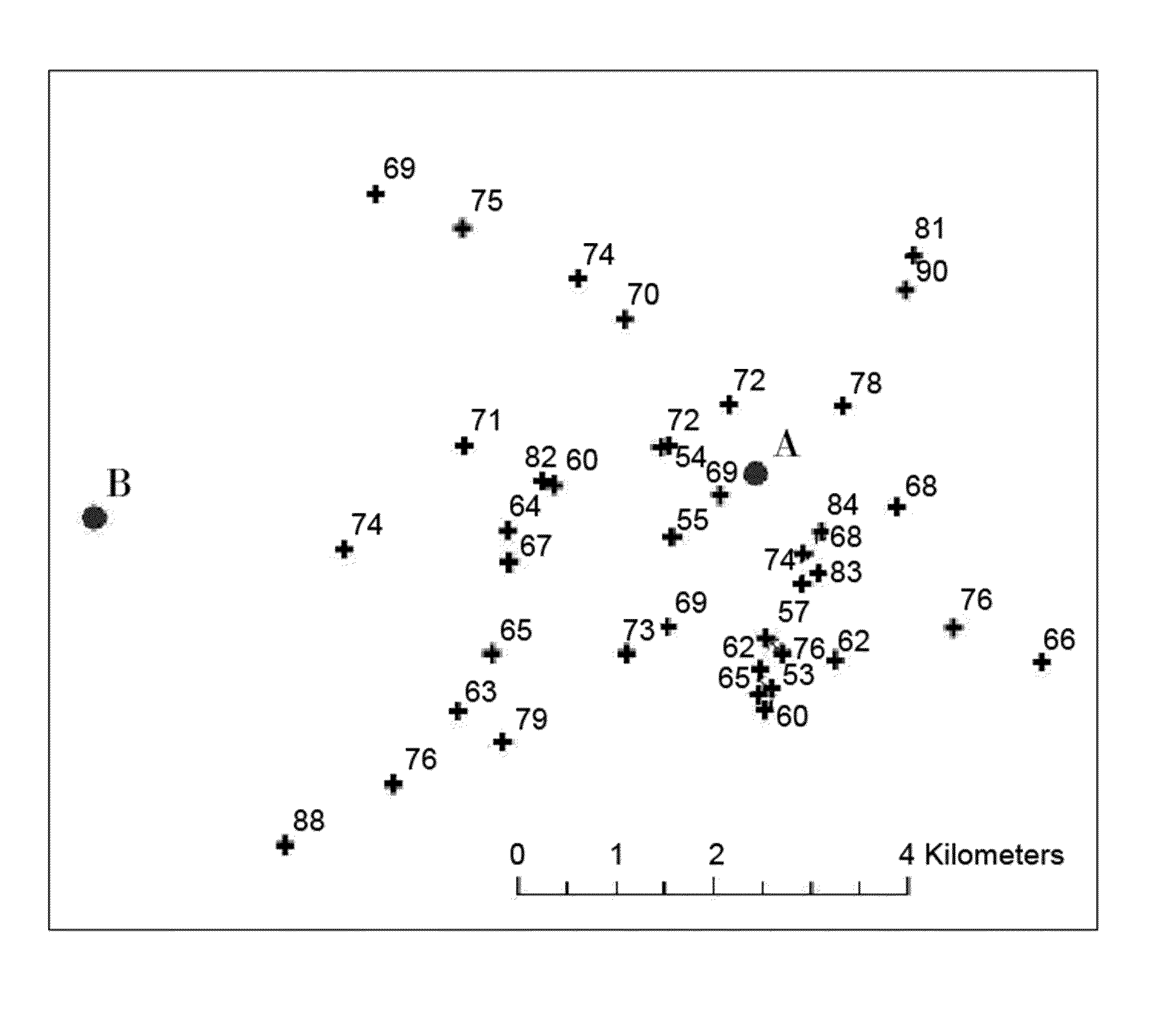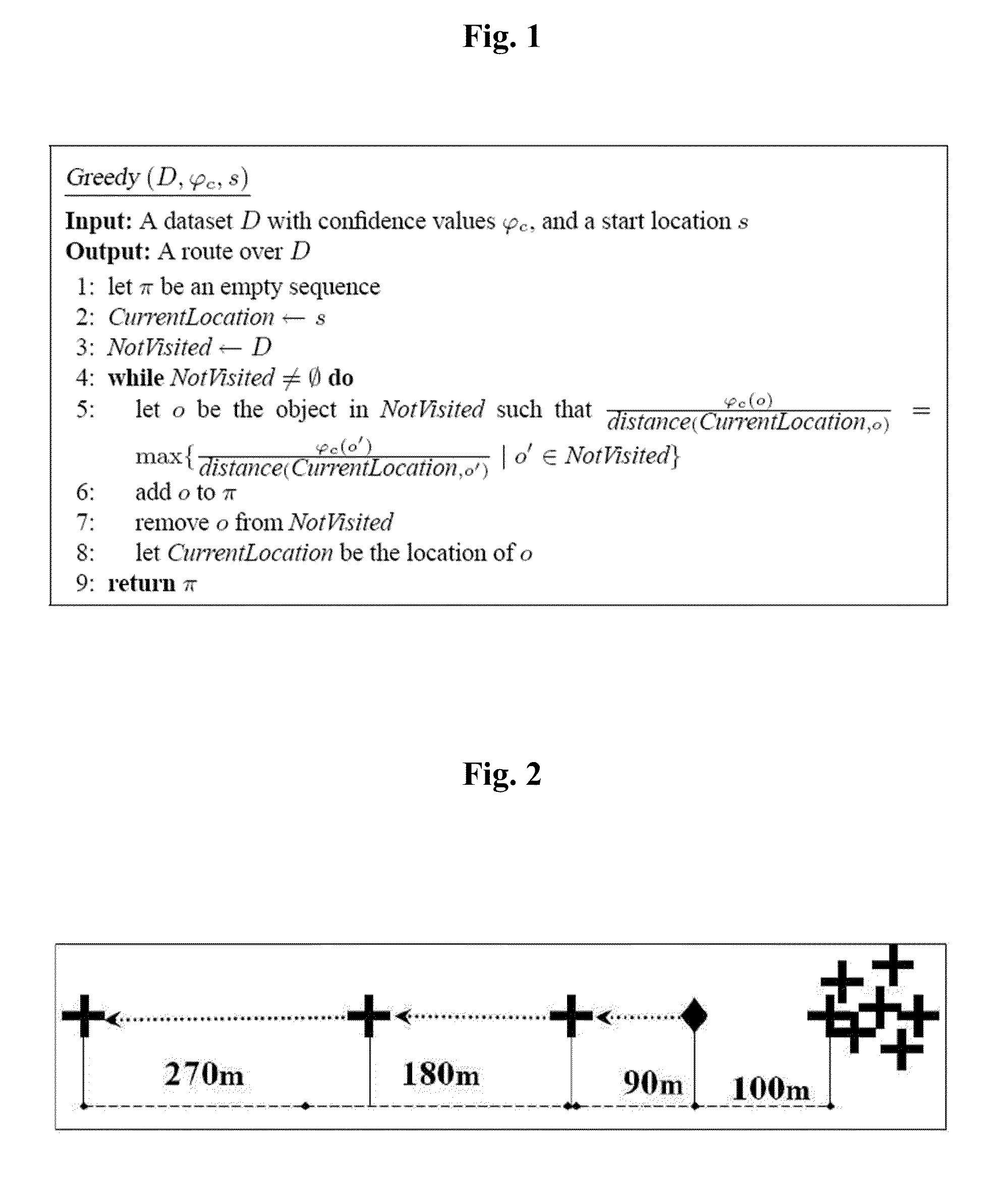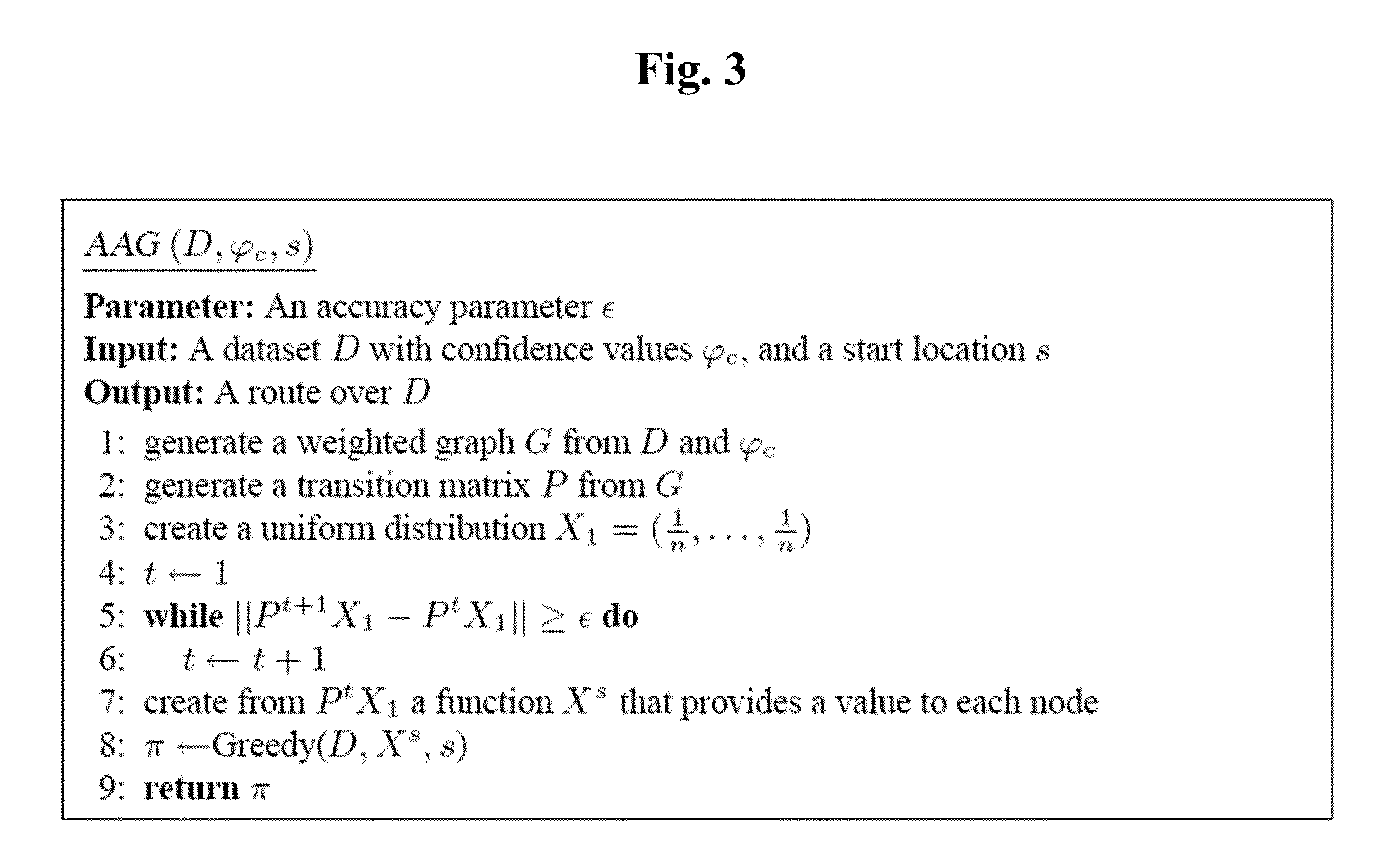Routing methods for multiple geographical entities
a technology of multiple geographical entities and routing methods, applied in forecasting, instruments, data processing applications, etc., can solve the problems of unsuitable geographic search parameters, long travel, and ineffective route-search tasks,
- Summary
- Abstract
- Description
- Claims
- Application Information
AI Technical Summary
Benefits of technology
Problems solved by technology
Method used
Image
Examples
example 3
[0123]Consider again the route-search task presented in Example 1. A suitable route-search query for this task should include (1) the location s of the parking lot of the car-rental agency, (2) the location t of the hotel, and (3) the following three search queries: Q1={pharmacy}; Q2={coffee shop}; and Q3={department store}.
[0124]A pre-answer to a route-search query is a route that starts at s, ends at t and for each query Q in Q, goes via one object of the result of Q. That is, if A1, . . . , Ak are the answers to the search queries of R, a route is a sequence s, o1, . . . , ok, t, where oi∈Ai for 1≦i≦k. The length of such a route is the sum of the distances between adjacent objects, i.e., distance(s, o1)+Σi=1k−1 distance(oi, oi+1)+distance(ok, t). The total score of the route is Σi=1k score(oi). The minimal score of the route is min{score(oi)|1≦i≦k}. The answer to a route-search query is a pre-answer chosen according to a specific semantics.
[0125]When computing an answer to a rout...
example 5
[0154]FIG. 2 shows a dataset that has a cluster of objects on the right side, and three objects with growing distances between them on the left side. Suppose that all the objects have the same confidence value. Given the starting location marked by a diamond, the route computed by the greedy algorithm will first go to the three objects on the left instead of going to the cluster on the right. For k=4, for instance, it is better to start the route by going to objects in the cluster on the right side.
[0155]3.2 The Adjacency-Aware Greedy Algorithm
[0156]Dealing with clusters of objects is important in many real-world scenarios. For example, in many cities, hotels are grouped near airports or tourist sites. Restaurants are usually located in the city center, near tourist sites and in the business district. Similarly, other utilities, such as shops or municipal buildings, are usually grouped together rather than being uniformly dispersed all over the city.
[0157]When a given dataset contai...
PUM
 Login to View More
Login to View More Abstract
Description
Claims
Application Information
 Login to View More
Login to View More - R&D
- Intellectual Property
- Life Sciences
- Materials
- Tech Scout
- Unparalleled Data Quality
- Higher Quality Content
- 60% Fewer Hallucinations
Browse by: Latest US Patents, China's latest patents, Technical Efficacy Thesaurus, Application Domain, Technology Topic, Popular Technical Reports.
© 2025 PatSnap. All rights reserved.Legal|Privacy policy|Modern Slavery Act Transparency Statement|Sitemap|About US| Contact US: help@patsnap.com



